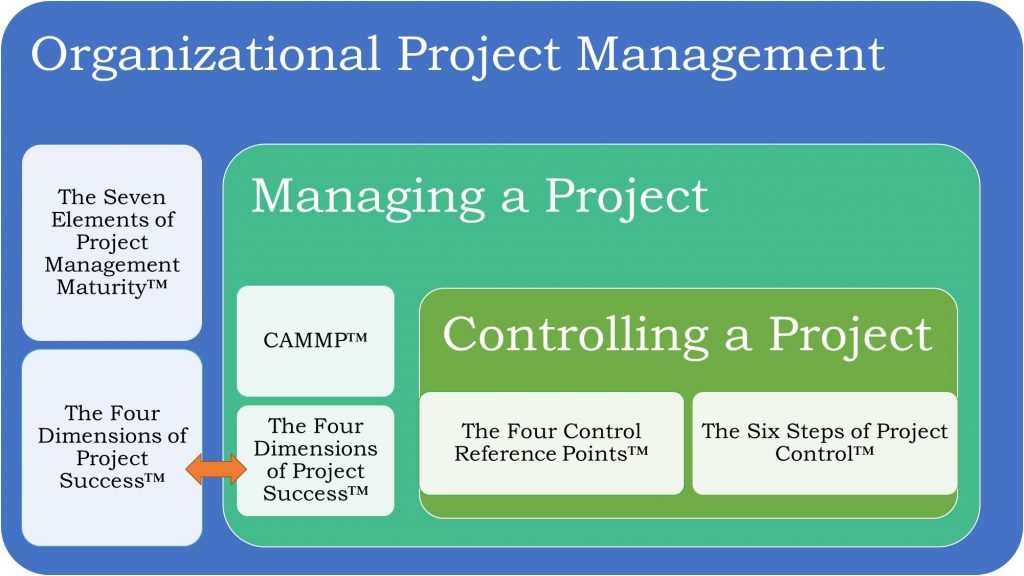This blog post is part of a chapter in Leading Megaprojects, a Tailored Approach. This part explains The SUKAD Way for Managing Projects and its various components. However, the focus is on how to integrate these components into a holistic solution, the Uruk PPM Platform.
The SUKAD Way
We will not go into a lot of details here, only a brief is needed.
Since 2007, when we launched the SUKAD project management innovation program, under the label The SUKAD Way™ , we have developed four leading solutions or approaches, as you will see here. CAMMP is the most developed[1] of the four. Please note two key facts:
- We propose that all of the four approaches to be applied in an integrated way, which would enhance the organizational projects’ performance. Without this integration, you might achieve fair or even good results, but it would be a challenge to reach higher levels of maturity.
- We did not reinvent the wheel; a good part of what goes into these solutions is available in the industry in one reference or another; although not in an identical form. We have built on what exists, improved some of what exists, and added our perspective, with a focus on applied project management and integrating these concepts into a holistic platform[2].

Organizational Project Management
Let us start with a higher level and the most important, the organizational project management level.
For managing the overall organizational projects, we would need to reflect on two essential parts, as you can see in the Figure. The Seven Elements of Project Management Maturity and The Four Dimensions of Project Success.
We had discussed the seven elements in an earlier chapter, and we only touched on the project success model earlier, but we will expand on that later in this chapter. Here we want to stress that The Four Dimensions of Project Success is shown twice in this image. The reason we do that is although the model was designed for assessing the success of a given project, two of the dimensions cannot be measured during the project life cycle or before closing the project.
One of the dimensions could be assessed before closure on some projects and after closure for other types of projects. The fourth dimensions cannot be evaluated until years after closing, for capital projects and megaprojects. Therefore, the third and fourth dimension would be part of the organizational project management function not part of the project manager scope. Maybe it would be assigned to a centralized project management leadership.
Managing a Project
The core part of managing a project effort is The Customizable and Adaptable Methodology for Managing Projects, which we would discuss in detail as we continue with this chapter. The second part that we integrate into CAMMP is the project success model, as we have already explained. CAMMP is about managing a single project, using a tailored method derived from the CAMMP methodological approach. Although the focus of CAMMP is on the overall management of a project, concept to success, project life cycle model, which would include control, we are addressing Controlling a Project separately.
Controlling a Project
To control a project, we consider two concepts. The first is about defining the baseline, where is the baseline of a project? Is it fixed at one point, such as the final authorization sanctioning a project to proceed into implementation, which is a common understanding? Or is it moving along the project life cycle? We propose the concept of The Four Control Reference Points, which we will discuss in a later chapter in this section.
So the first concept is about defining the baseline points on the PLC. The next thought is: at each of these points, how do we assess the project performance and forecast the project? By forecast, we mean the updated expectations for completing the project in term of cost, schedule, and other factors. We call this assessment and forecasting mechanism The Six Steps of Project Control. This part is outside the scope of this book.
Other Resources
We will have an appendix at the end of the book for additional and other resources that would help in applying The SUKAD Way and CAMMP.
We will list the e-books series[3] that would include case studies. In addition to e-books, we have online learning and coaching program[4], which is not limited to The SUKAD Way topics but will be an integral part. At the time of writing these words, we are working with a group of professionals on launching the Uruk Initiative[5], a new company for developing online solutions and platform with CAMMP as the central engine.
The Uruk PPM Platform
What does the above has to do with the Uruk PPM Platform?
The SUKAD various publications focuses on the SUKAD Way and on CAMMP. In the book on Leading Megaprojects we also discuss the need for an integrated project management solution, as you see in the text here (extracred from of one of the chapters). This integration concept that is necessary for applying project management in the real world, will be the core of the Uruk PPM Platfom.
The transformation of SUKAD into a SUKAD Corp (a USA Corporation) incorporate the Uruk Division, which is responsible for the development of the Uruk PPM Platform, which we started already. The platform is an online-based solution using the robust Microsfot Platform but using CAMMP and the other SUKAD Way components as the engine that will drive the management of the organizational projects and portfolio.
To learn more, reach out!
[2] That will be the Uruk PPM Platform.
[3] Published by Bookboon.com
[4] The Quest to Mastering Project Management, PM Quest, https://pmquest.sukad.com.
[5] The Uruk Initiative, which is now the Uruk Corporation, www.urukppm.com

Trackbacks/Pingbacks